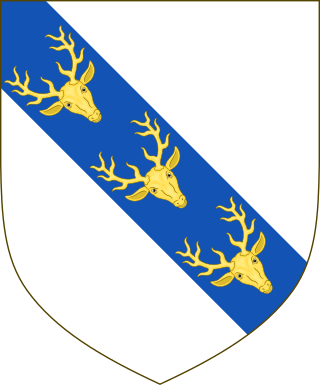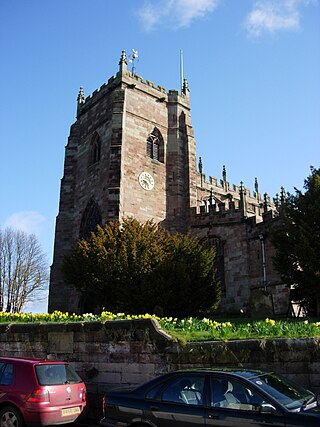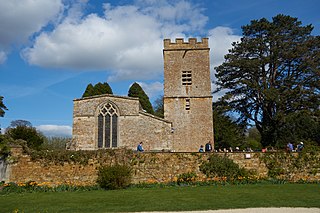Related Research Articles

Henry VII was King of England and Lord of Ireland from his seizure of the crown on 22 August 1485 until his death in 1509. He was the first monarch of the House of Tudor.

Otto IV was the Holy Roman Emperor from 1209 until his death in 1218.

Yeoman is a noun originally referring either to one who owns and cultivates land or to the middle ranks of servants in an English royal or noble household. The term was first documented in mid-14th-century England. The 14th century also witnessed the rise of the yeoman longbow archers during the Hundred Years' War, and the yeoman outlaws celebrated in the Robin Hood ballads. Yeomen also joined the English Navy during the Hundred Years' War as seamen and archers. In the early 15th century, yeoman was the rank of chivalry between page and squire. By the late 17th century, yeoman became a rank in the Royal Navy for the common seamen who were in charge of ship's stores, such as foodstuffs, gunpowder, and sails.

The King's Body Guard of the Yeomen of the Guard is a bodyguard of the British monarch. The oldest British military corps still in existence, it was created by King Henry VII in 1485 after the Battle of Bosworth Field.

Sir Walter Mildmay was a statesman who served as Chancellor of the Exchequer to Queen Elizabeth I, and founded Emmanuel College, Cambridge.

Sir John Stanley, KG of Lathom, near Ormskirk in Lancashire, was Lord Lieutenant of Ireland and titular King of Mann, the first of that name. He married a wealthy heiress, Isabel Lathom, which, combined with his own great abilities, allowed him to rise above the usual status of a younger son.
Sir Thomas Tresham was a British politician, soldier and administrator. He was the son of Sir William Tresham and his wife Isabel de Vaux, daughter of Sir William Vaux of Harrowden. Thomas's early advancement was due to his father's influence. In 1443 he and his father were appointed as stewards to the Duchy of Lancaster's estates in Northamptonshire, Buckinghamshire, Bedfordshire and Huntingdonshire, and by 1446 Thomas was serving as an esquire for Henry VI, being made an usher of the king's chamber in 1455. He was appointed a Justice of the Peace for Huntingdonshire in 1446, a position he held until 1459, and was returned to Parliament for Buckinghamshire in 1447 and Huntingdonshire in 1449. Despite the Tresham family's close links with the royal court they were also on good terms with Richard Plantagenet, 3rd Duke of York, and when he returned from Ireland in 1450 Tresham and his father went to greet him. Shortly after leaving home on 23 September they were attacked by a group of men involved in a property dispute with his father; William Tresham was killed, and Thomas was injured.

Sir Frank Athelstane Swettenham was a British colonial administrator who became the first Resident general of the Federated Malay States, which brought the Malay states of Selangor, Perak, Negeri Sembilan and Pahang together under the administration of a Resident-General based in Kuala Lumpur. He served from 1 July 1896 to 4 November 1901. He was also an amateur painter, photographer and antique collector.

Ranulf de Blondeville, 6th Earl of Chester and 1st Earl of Lincoln, known in some references as the 4th Earl of Chester, was one of the "old school" of Anglo-Norman barons whose loyalty to the Angevin dynasty was consistent but contingent on the receipt of lucrative favours. He has been described as "almost the last relic of the great feudal aristocracy of the Conquest".

Malpas is a market town and a civil parish in the unitary authority of Cheshire West and Chester and the ceremonial county of Cheshire, England. It lies near the borders with Shropshire and Wales, and had a population of 1,673 at the 2011 census.

John Waltham was a priest and high-ranking government official in England in the 14th century. He held a number of ecclesiastical and civic positions during the reigns of King Edward III and Richard II, eventually rising to become Lord High Treasurer, Lord Privy Seal of England and Bishop of Salisbury. He is buried in Westminster Abbey, London.

The Court of the Council in the Dominion and Principality of Wales, and the Marches of the same, commonly called the Council of Wales and the Marches or the Council of the Marches, was a regional administrative body founded in Shrewsbury.
Richard Harliston, became a yeoman of the king's chamber on the accession of Edward IV. He was made vice-admiral, in which capacity he came to Guernsey.
The Standard Bearer of England was once an important office within the English army, especially during the times when Kings were still present on the battlefield. As standard-bearer Henry de Essex was greatly chastised when he threw down the English Standard and claimed his King (Stephen) was dead in 1153.

The Glyndŵr rebellion was a Welsh rebellion led by Owain Glyndŵr against the Kingdom of England during the Late Middle Ages. During the rebellion's height between 1403 and 1406, Owain exercised control over the majority of Wales after capturing several of the most powerful English castles in the country, and formed a national parliament at Machynlleth. The revolt was the last major manifestation of a Welsh independence before the annexation of Wales into England in 1543.
Sir William Fitzwilliam was a Merchant Taylor, Sheriff of London, servant of Cardinal Wolsey, and a member of the council of Henry VII.

The Church of St Mary the Virgin is the Church of England parish church of Chastleton, Oxfordshire, England. It is a parish church in the parish of Little Compton, along with those of Cornwell, Daylesford and Little Rollright. The parish is part of the Team Benefice of Chipping Norton, along with the parishes of Chipping Norton with Over Norton, Churchill and Kingham. The Benefice of Chipping Norton is part of the Diocese of Oxford.

The title Baron Cobham has been created numerous times in the Peerage of England; often multiple creations have been extant simultaneously, especially in the fourteenth century.

Sir Richard Clement of Ightham Mote in Kent, England, was a courtier to King Henry VII and to his son Henry VIII.

One of the earliest documented uses of Yeoman, it refers to a servant or attendant in a late Medieval English royal or noble household. A Yeoman was usually of higher rank in the household hierarchy. This hierarchy reflected the feudal society in which they lived. Everyone who served a royal or noble household knew their duties, and knew their place. This was especially important when the household staff consisted of both nobles and commoners. There were actually two household hierarchies which existed in parallel. One was the organization based upon the function (duty) being performed. The other was based upon whether the person performing the duty was a noble or a commoner.
References
- ↑ James L. Gillespie (1984). "Matthew Swettenham, Ricardian profiteer" (PDF). in Transactions of the Historic Society of Lancashire and Cheshire. 133: 133–138.
- ↑ Catalogue of Rubbings of Brasses and Incised slabs. Victoria and Albert Museum: HMSO I(nternet Archive). 1929. p. Plate 17. Retrieved 29 February 2024.
- ↑ Barlow, Henry S. (1995). Swettenham. Kuala Lumpur: Southdene. pp. 1–2.